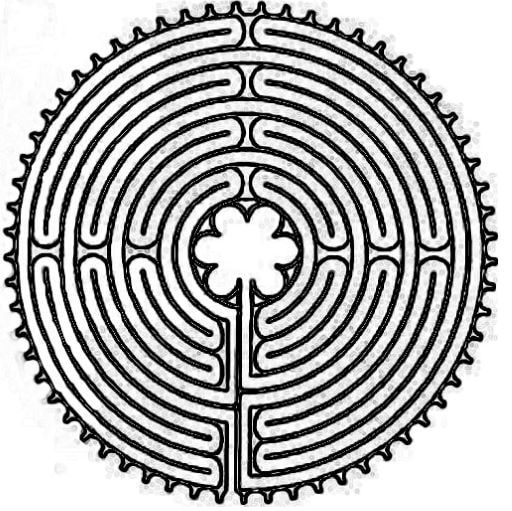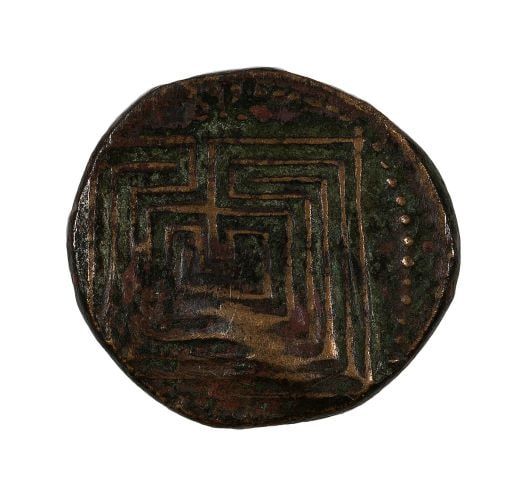The labyrinth or the adventure of looking for the exit
One of the most evocative pictures from mythology is that of the labyrinth, yet we have mostly forgotten the tales of love, power, pain, and bravery that are associated with it.

From ancient Crete, located in the center of the Mediterranean Sea, at the crossroads between Europe, Africa, and Asia, came to our days one of the most suggestive mythical images, that of the labyrinth, whose stories of love, power, suffering, and heroism we have often forgotten.
The labyrinth did exist. It was located on the subway floor of a palace. It was one of the most fantastic constructions that Daedalus, one of the famous craftsmen of the Greek world, made in the city of Knossos, where King Minos had his palace: it was a sui generis construction that occupied a large expanse of land full of intricate paths that converged and diverged, intersected and overlapped, bordered by very high walls, which made it very difficult, almost impossible, to find the center or to return to the entrance. These were the rooms destined for the Minotaur, son of Pasiphae, wife of the Cretan king.
It is said that Minos implored Poseidon for a sign that would make clear to the Cretans the desire of the gods for him to reign among them. His pleas were heard and, one day, from the waves of the sea, emerged a bull of unprecedented beauty that Minos should offer in sacrifice to the gods, but the new king resisted, kept it, and replaced it with another. Poseidon punished him by making his wife fall madly in love with the bull and begetting this terrible being.
The Minotaur, half man and half bull, fed only on human flesh; every year, seven young boys and seven young girls from the cities under the dominion of the king of Crete had to be sacrificed to satisfy his hunger. When it was time for the people of Athens to feed the monster, the brave Theseus, son of Aegeus, king of Athens, set out to defeat it. He took the victims with him to Crete to protect them from being killed.
As soon as he landed in Crete, Ariadne, the young daughter of King Minos, fell in love with him and decided to support him in his endeavor by seeking the advice of Daedalus, who knew the plan of the labyrinth well. The only possible resource to find the exit would be a reel of silk thread that Ariadne would provide to Theseus so that he could unravel it while he went to the center of the labyrinth, where he would find the Minotaur and kill him.
And so it was: Theseus went with his companions to the labyrinth and led the feat of facing, by himself, this evil being. Corner after corner, twist and turn after twist and turn, he searched for it, while the thread reeled, drawing an endless line until the terrible encounter took place. The triumph belonged to the Athenian prince.
Before King Minos realized what had happened, the young men set sail, and Ariadne also fled with Theseus. But the hero would soon understand, through a dream, that it was impossible to remain united for life since Ariadne was destined for Dionysos.
The young Athenians saved by Theseus continued on their way back to their homeland, and such was their jubilation at the defeat of the Minotaur that as they approached the Greek coast, they forgot to replace the black sail, a sign of mourning for the victims, with the white sail, a sign of the victorious return of Theseus.
King Aegeus waited day after day from the Acropolis for the arrival of his son, and when he sighted the ship with the black sail, full of grief at the thought that he had died, he committed suicide by throwing himself into the sea, which would later be known as the Aegean Sea.
The mythical narration concludes here and tells us of the exploits of Theseus in the face of adversities of all kinds, from which he emerges well liberated and strengthened, master of himself. In reality, however, the labyrinth has always been engraved in the hearts of all men.

Over time, the labyrinth crosses the lives of ancient peoples and cultures, giving meaning to confrontations and displacements of human beings. China, Egypt, India, and Mesopotamia have recourse to these constructions; Virgil himself confirms their existence when he describes the path that leads to the Sibyl of Cumae.
The people of the Middle Ages used to paint labyrinthine designs on the floors of the cathedrals as an analogy of the pilgrimage to the Holy Lands, where the believer had to travel on his knees and pray to reach the center, which was nothing less than Jerusalem. And if we remember the ritual and secret character of the guilds and brotherhoods of the builders of those years—the origin of Freemasonry—we can intuit its initiatory meaning, that is, the overcoming of obstacles to access the revelation of that which by its sacred character is preserved in secrecy, in which case we are closer to Solomon's labyrinth than to that of the Greek hero. Solomon's building reminds us of the Great Work of the alchemists, where the struggle to get to the center shows how people become purer and spiritually aware.
It is no coincidence that the architectural layout of medieval cities is labyrinthine, made of winding paths dominated by the centers of feudal and ecclesiastical power because the labyrinth also refers to a kind of fortress and defense against any form of human adversity and spiritual evil, whose purpose is to preserve the space of the sacred.

Such is the case, for example, of The Labyrinth of the World and the Paradise of the Heart, one of the youthful literary creations of the 16th-century Czech thinker John Amos Comenius, where man, a pilgrim on earth-according to the Christian worldview-, travels through cities and nations, kingdoms and churches, trades, schools and universities, observing the reasons for discord, enmity, conflict, and war between men and women, between peoples and governments, to finally recover, amid unrest, deterioration, disillusionment, and death, the original unity that he finds in the depths of himself. This is the treasure, jealously guarded by the labyrinthine paths that lead to the center.
The taste for labyrinths that persists during the following centuries expresses an ornamental use: since the Renaissance, it is manifested, and already in the 16th century, the Baroque century par excellence, it is perfected in the cultivation of nature, where the architecture of parks and gardens models shrubs to give shape to labyrinthine paths that, delighted, walkers walk along.
With the passing of the centuries, the labyrinth continued to shed its initial character and this word became synonymous with a complicated, tangled situation, for which no easy or immediate way out is foreseen, but we might be surprised to observe traces that confirm the persistence of its symbolic content: the images it raises place us precisely in the realm of the paradoxes and dilemmas of life, where the sense of adventure is always present, oriented towards the search for ways out, the search for oneself, the flourishing of the best that is in each one of us, the flourishing of the best that is in each one of us, the construction of our circumstances, and of the feats we have to experience. We could say that we all share at least some of what the Greek heroes wanted...
Author: María Esther Aguirre Lora, Source: Correo del Maestro. No. 39, pages 18-22.




